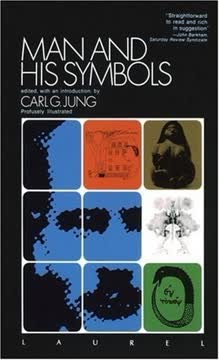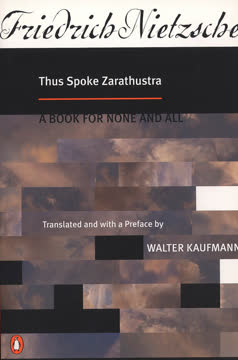النقاط الرئيسية
1. الأحلام ليست هراءً بل تجارب نفسية ذات معنى
الحلم لا يمكن مقارنته بالأصوات غير المنتظمة لآلة موسيقية، التي، بدلاً من أن تعزف بيد عازف، تُضرب بقوة خارجية؛ الحلم ليس بلا معنى، وليس عبثيًا، ولا يفترض أن جزءًا من مخزون أفكارنا خامد بينما يبدأ جزء آخر في الاستيقاظ.
الأهمية النفسية للأحلام. أحدث فرويد ثورة في فهم الأحلام من خلال تأكيده أنها ليست مجرد إطلاقات عصبية عشوائية، بل ظواهر نفسية منظمة تحمل معاني عميقة. تمثل الأحلام شكلًا معقدًا من التواصل من العقل الباطن، تنقل أفكارًا ورغبات وتوترات نفسية لا يمكن التعبير عنها مباشرة في الحياة اليقظة.
الأحلام كوسيلة تواصل ذات معنى. على عكس النظريات السابقة التي اعتبرت الأحلام بلا معنى، اقترح فرويد أن الأحلام هي إنتاجات نفسية مُركبة بعناية. تتبع هذه الأحلام قوانين نفسية محددة وتستخدم آليات تمثيل فريدة، بما في ذلك الرمزية، والتكثيف، والإزاحة، للتواصل بأفكار ورغبات مكبوتة.
التعقيد النفسي. الأحلام ليست تجارب بسيطة وعشوائية، بل نصوص نفسية معقدة تتطلب تفسيرًا دقيقًا. تمثل طريقة متطورة للتعبير عن المواد الباطنية بينما تحمي الحالم في الوقت نفسه من مواجهة محتوى نفسي مزعج بشكل مباشر.
2. الأحلام تمثل تحقيق الرغبات من العقل الباطن
الحلم هو تحقيق لرغبة.
تجسيد الرغبات الباطنية. تمثل الأحلام في جوهرها محاولة العقل الباطن لتحقيق الرغبات المكبوتة. وغالبًا ما تنشأ هذه الرغبات في الطفولة ولا يمكن التعبير عنها مباشرة في الحياة اليقظة بسبب القيود الاجتماعية أو الأخلاقية أو النفسية.
آليات تحقيق الرغبات. يخلق العقل الباطن سيناريوهات معقدة في الأحلام ترمز إلى تلبية الرغبات التي تعتبر غير مقبولة أو مستحيلة في الواقع. يمكن أن تتراوح هذه الرغبات من الدوافع الجنسية والعدوانية إلى تطلعات نفسية أكثر تعقيدًا للاعتراف أو القوة أو الحل العاطفي.
الحماية النفسية. من خلال تحويل الرغبات المحتملة التهديد إلى سرد رمزي في الأحلام، يحمي العقل نفسه من المواجهة المباشرة مع محتوى نفسي غير مريح. وبالتالي، تعمل الأحلام كـ "صمام أمان" لإطلاق التوترات النفسية المكبوتة بطريقة مقبولة ومخفية.
3. تشكيل الأحلام ينطوي على عمليات نفسية معقدة
تظهر أفكار الحلم ومحتوى الحلم كوصفتين لنفس المحتوى بلغتين مختلفتين.
الترجمة النفسية. تشكيل الحلم هو عملية معقدة لترجمة الأفكار الباطنية إلى لغة بصرية ورمزية. تتضمن هذه الترجمة آليات نفسية متعددة تحول المواد النفسية الخام إلى سرد حلم مفهوم.
العمليات الرئيسية لتشكيل الأحلام:
- التكثيف: دمج أفكار متعددة في عناصر حلم واحدة
- الإزاحة: تحويل التركيز النفسي من عناصر مهمة إلى عناصر تبدو تافهة
- الرمزية: تمثيل الأفكار المجردة من خلال صور ملموسة
- التشويه: إخفاء المحتوى النفسي المحتمل التهديد
الإبداع النفسي. تظهر الأحلام إبداعًا نفسيًا ملحوظًا، مستخدمة آليات متطورة للتواصل مع المواد الباطنية المعقدة بينما تحمي الحالم من المواجهة النفسية المباشرة.
4. تستخدم الأحلام لغة رمزية وتكثيف
الأحلام قادرة على تمثيل أكثر العمليات الفكرية تعقيدًا بأكثر الطرق لفتًا للنظر.
التمثيل الرمزي. تتواصل الأحلام من خلال لغة رمزية غنية حيث تمثل الأشياء والأفعال والسيناريوهات معاني نفسية أعمق. الرموز ليست عالمية بل هي شخصية وعميقة الاعتماد على السياق.
خصائص اللغة الرمزية:
- معاني متعددة مضمنة في صور واحدة
- ارتباطات شخصية وثقافية
- تواصل مجازي وغير مباشر
- دلالات نفسية متعددة الطبقات
الضغط النفسي. تظهر الأحلام قدرة استثنائية على ضغط المواد النفسية المعقدة في سرد رمزي مختصر. يمكن أن تمثل صورة حلم واحدة أفكارًا وذكريات وتجارب عاطفية متعددة في وقت واحد.
5. تؤثر تجارب الطفولة بشكل عميق على محتوى الأحلام
الأحلام لا يمكن مقارنتها بالأصوات غير المنتظمة لآلة موسيقية، التي، بدلاً من أن تعزف بيد عازف، تُضرب بقوة خارجية.
الطفولة كأساس نفسي. تشكل تجارب الطفولة المبكرة المصدر الرئيسي لمحتوى الأحلام. تعود الصراعات والرغبات والتجارب الصادمة غير المحلولة من الطفولة لتظهر باستمرار في محتوى الأحلام، مما يكشف عن أهميتها النفسية المستمرة.
الديناميات النفسية التطورية:
- الدوافع الجنسية والعدوانية من الطفولة
- العلاقات الأسرية غير المحلولة
- الاستكشافات النفسية المبكرة والفضول
- عمليات التعلم النفسي الأساسية
الاستمرارية النفسية. تظهر الأحلام أن تجارب الطفولة ليست مجرد ذكريات منسية، بل تبقى نشطة في العقل الباطن، تؤثر باستمرار على الوظائف النفسية طوال الحياة.
6. الدوافع الجنسية والعدوانية هي مصادر رئيسية للأحلام
الرغبات الجنسية للطفل - بقدر ما تستحق هذا التوصيف في حالتها الناشئة - تستيقظ في سن مبكرة جدًا.
الدوافع النفسية الأساسية. تمثل الدوافع الجنسية والعدوانية دوافع نفسية جوهرية تؤثر بشكل كبير على محتوى الأحلام. تنشأ هذه الدوافع، التي غالبًا ما تكون من الطفولة، عادةً في الحياة اليقظة ولكنها تجد تعبيرًا من خلال الأحلام.
التجليات النفسية:
- تمثيلات عقدة أوديب
- الفضول والاستكشاف الجنسي
- الخيالات العدوانية والتنافسية
- مواضيع القوة والسيطرة
التعبير الباطني. توفر الأحلام آلية مقبولة اجتماعيًا للتعبير عن المواد النفسية الجنسية والعدوانية المحتملة التهديد التي لا يمكن التواصل بها مباشرة في الحياة اليقظة.
7. تستخدم الأحلام آليات الإزاحة والتشويه
الإزاحة في الحلم والتكثيف في الحلم هما الحرفيان اللذان يمكننا أن ننسب إليهما بشكل رئيسي هيكل الحلم.
آليات الدفاع النفسي. تمثل الإزاحة والتشويه استراتيجيات نفسية حاسمة لتحويل المواد الباطنية المحتملة التهديد إلى سرد أحلام مقبول.
تقنيات التشويه الرئيسية:
- تحويل التركيز النفسي
- الاستبدال الرمزي
- التحول العاطفي
- إخفاء المحتوى النفسي الأصلي
وظيفة الرقابة. تعمل هذه الآليات كوظيفة نفسية وقائية، مما يسمح للعقل الباطن بالتواصل مع المواد الحساسة بينما يمنع المواجهة المباشرة، التي قد تكون مؤلمة.
8. تفسير الأحلام يكشف الديناميات النفسية الباطنية
الحلم هو تحقيق (مخفي) لرغبة (مكبوتة، مضغوطة).
علم الآثار النفسية. يعمل تفسير الأحلام كطريقة لاستخراج المواد النفسية الباطنية، كاشفًا عن الرغبات المخفية والصراعات والتوترات النفسية غير المحلولة.
مبادئ التفسير:
- تحليل دقيق لعناصر الحلم
- استكشاف الارتباطات الشخصية
- فهم التمثيلات الرمزية
- كشف المعاني النفسية المخفية
الإمكانات العلاجية. يوفر تفسير الأحلام أداة قوية لفهم الديناميات النفسية الفردية، مما يسهل الرؤية الشخصية وإمكانية الشفاء النفسي.
9. توفر الأحلام نظرة ثاقبة على الرغبات والصراعات المكبوتة
الأحلام قادرة على تمثيل أكثر العمليات الفكرية تعقيدًا بأكثر الطرق لفتًا للنظر.
نافذة نفسية. تقدم الأحلام منظورًا فريدًا لرغبات الأفراد الأكثر كبتًا، ومخاوفهم، وصراعاتهم النفسية التي لا يمكن التعبير عنها مباشرة في الحياة اليقظة.
آليات الكشف النفسي:
- التمثيل الرمزي للرغبات المحرمة
- تحويل الدوافع المهددة
- التواصل غير المباشر للتوترات النفسية
- الحفاظ على التعقيد النفسي
التواصل الباطني. تمثل الأحلام نظامًا متطورًا للتواصل النفسي يسمح للأفراد باستكشاف ومعالجة المواد العاطفية والنفسية المعقدة.
10. تشكل الرقابة النفسية تمثيل الأحلام
الحلم هو تحقيق (مخفي) لرغبة (مكبوتة، مضغوطة).
الحماية النفسية. تمثل رقابة الأحلام آلية حاسمة لتحويل المواد الباطنية المحتملة التهديد إلى سرد نفسي مقبول.
استراتيجيات الرقابة:
- التمويه الرمزي
- التحول العاطفي
- إزاحة التركيز النفسي
- طرق التواصل غير المباشر
التوازن النفسي. تتيح الرقابة للأفراد استكشاف المواد النفسية المعقدة مع الحفاظ على التوازن النفسي وحمايتهم من التجارب العاطفية المحتملة المفرطة.
آخر تحديث::
FAQ
What's The Interpretation of Dreams about?
- Psychoanalytic exploration: Sigmund Freud's book delves into the significance of dreams, proposing that they are a form of wish fulfillment and reveal our unconscious desires and conflicts.
- Dream analysis technique: Freud introduces methods for interpreting dreams, focusing on understanding the latent content behind the manifest content through free association.
- Censorship in dreams: The book discusses how dreams are distorted by psychic censorship, which alters original thoughts to make them acceptable to the conscious mind.
Why should I read The Interpretation of Dreams?
- Foundational text in psychology: This book is a cornerstone of psychoanalysis, influencing modern psychology and our understanding of the human mind.
- Understanding human behavior: Freud's exploration offers insights into human motivations and the unconscious mind, helping readers understand how unresolved conflicts manifest in dreams.
- Cultural significance: The book has impacted literature, art, and culture, and engaging with Freud's ideas allows readers to appreciate their societal influence.
What are the key takeaways of The Interpretation of Dreams?
- Dreams as wish fulfillments: Freud posits that dreams serve to satisfy desires not acknowledged in waking life, often rooted in childhood experiences.
- Childhood experiences: Many dreams are influenced by early childhood, which continues to affect our adult lives and dream formation.
- Distortion and censorship: Dreams undergo distortion due to unconscious censorship, concealing deeper desires behind the manifest content.
What are the best quotes from The Interpretation of Dreams and what do they mean?
- "The interpretation of dreams is the royal road to a knowledge of the unconscious activities of the mind.": This highlights Freud's belief that analyzing dreams reveals hidden thoughts and desires.
- "Dreams are the guardians of sleep.": Freud suggests that dreams protect sleep by managing discomfort or distress, underscoring their role in processing waking experiences.
- "A dream is the fulfillment of a wish.": This captures Freud's theory that dreams represent unfulfilled desires, expressed symbolically during sleep.
How does Freud define the method of dream interpretation in The Interpretation of Dreams?
- Free association technique: Freud advocates for free association, where the dreamer shares thoughts related to the dream without censorship to uncover latent content.
- Analyzing dream symbols: Understanding symbols is crucial, as they often represent deeper meanings and subjective interpretations.
- Identifying wish fulfillment: The goal is to identify the underlying wish the dream fulfills, guiding the analysis of dream content.
What role do childhood experiences play in dreams according to Freud?
- Foundation of unconscious desires: Childhood experiences influence dreams, with unresolved conflicts resurfacing in distorted forms.
- Repressed memories: These experiences can resurface in dreams, impacting their content and meaning significantly.
- Symbolic representation: Dreams symbolize childhood experiences, allowing the dreamer to process and confront these memories.
How does Freud explain the concept of dream distortion?
- Censorship mechanism: Psychic censorship alters original thoughts in dreams to make them acceptable, disguising the true wish.
- Conflict between desires: Distortion occurs when there's a conflict between conscious and unconscious desires, leading to altered dream content.
- Symbolic representation: Distorted dreams use symbols to represent underlying wishes, making them less recognizable.
What is the Oedipus complex in The Interpretation of Dreams?
- Childhood sexual desires: Freud describes the Oedipus complex as a child's unconscious desire for the opposite-sex parent and rivalry with the same-sex parent.
- Cultural and literary references: The story of Oedipus illustrates these feelings, suggesting their universality across cultures.
- Repression and dreams: The complex often manifests in dreams, revealing suppressed feelings and desires.
How does Freud differentiate between manifest and latent content in dreams?
- Manifest content: This is the dream's storyline as remembered, often a distorted version of underlying thoughts.
- Latent content: Represents the hidden meaning, revealing unconscious desires and conflicts.
- Interpretation process: Dream analysis aims to uncover latent content by examining manifest content through associations and symbols.
What is the dream work process described in The Interpretation of Dreams?
- Condensation: Combines multiple ideas into a single dream element, creating complex interpretations.
- Displacement: Transfers emotional significance to less threatening objects, allowing indirect confrontation of feelings.
- Censorship: Alters dream content to disguise true meaning, crucial for understanding latent content.
What are some common symbols in dreams according to Freud?
- Sexual symbols: Many symbols represent sexual desires, manifesting as objects like tunnels or animals.
- Death and burial: Symbolize transformation or life changes, reflecting fears or desires related to change.
- Parental figures: Represent authority or nurturing, embodying internal conflicts regarding upbringing.
How does The Interpretation of Dreams relate to Freud's broader theories of psychoanalysis?
- Foundation of psychoanalysis: The book lays groundwork for Freud's theories on the unconscious, repression, and childhood experiences.
- Link to neuroses: Dream analysis is connected to treating neuroses, highlighting its therapeutic potential.
- Cultural impact: Freud's exploration of dreams has influenced psychology, literature, art, and popular culture.
مراجعات
تفسير الأحلام هو عمل رائد لفرويد، حيث يقدم فيه نظريته حول اللاوعي وتحليل الأحلام. يجد النقاد هذا الكتاب مثيرًا للاهتمام ولكنه يتطلب جهدًا، حيث يثنون على نهج فرويد المبتكر مع الاعتراف بالقيود الثقافية. يقدّر الكثيرون أسلوبه في الكتابة وعمق تحليله، حتى وإن اختلفوا مع بعض الاستنتاجات. التأثير الذي أحدثه الكتاب على علم النفس والثقافة معترف به على نطاق واسع. يشير القراء إلى أن محتواه الكثيف يتطلب دراسة دقيقة، لكنه يقدم رؤى قيمة حول النفس البشرية وطبيعة الأحلام.
Similar Books



















